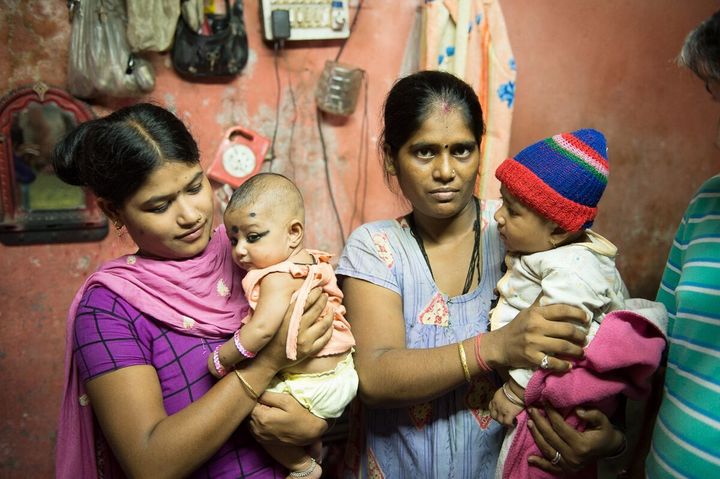By: Sarah Olson

Human-trafficking survivors in India.
Each year millions of men, women, and children are trafficked in countries around the world, including the United States. Human-trafficking and forced labor is estimated by the International Labor Organization to generate around $150 billion dollars of illegal profit per year, which makes it second only to drug-trafficking as the most profitable form of transnational crime. Human-trafficking is believed to be the third-largest criminal activity in the world and is a form of human slavery that must be addressed. To highlight the importance of this issue, since 2010 each January has been designated by Presidential Proclamation, National Slavery and Human Trafficking Prevention Month. During this month, is National Human Trafficking Awareness Day, January 11th, which was designated as so by the U.S. Senate in 2007 with the hopes of raising awareness to combat human trafficking. This initiative has been adopted globally through the United Nations with global awareness days including the International Day for the Abolition of Slavery.
Human trafficking is a global issue that affects people in almost every country and is a serious crime that violates human rights. Trafficking of persons involves the recruitment or transfer of people by the means of force, fraud, or coercion for the purpose of exploitation including forced labor, domestic servitude, removal of organs, and commercial sexual exploitation. This crime is often times hidden, as victims rarely come forward to seek help for various reasons including language barriers, fear of traffickers, and fear of law enforcement. The International Labour Organization estimates that there are around 20.9 million victims globally that are trapped in horrific situations with traffickers exploiting them through the use of violence, threats, deception, debt bondage and other manipulative tactics.
In order to combat human trafficking, we should understand its key indicators. Being able to recognize these indicators provided by the Department of Homeland Security is the first step in identifying victims, which can help save a life:
(Note that not all indicators listed are present in every human trafficking situation, and the presence or absence of any of the indicators is not necessarily proof of human trafficking)
- Does the person appear disconnected from family, friends, community organizations, or houses of worship?
- Has the person stopped attending school?
- Has the person had a sudden or dramatic change in behavior?
- Is the person engaged in commercial sex acts?
- Is the person disoriented or confused, or showing signs of mental or physical abuse?
- Does the person have bruises in various stages of healing?
- Is the person fearful, timid, or submissive?
- Does the person show signs of having been denied food, water, sleep, or medical care?
- Is the person often in the company of someone to whom he or she defers? Or someone who seems to be in control of the situation, e.g., where they go or who they talk to?
- Does the person appear to be coached on what to say?
- Is the person living in unsuitable conditions?
- Does the person lack personal possessions and appear not to have a stable living situation?
- Does the person have freedom of movement? Can the person freely leave where they live? Are there unreasonable security measures?
If you believe that you may have information about a potential trafficking situation you can call the National Human Trafficking Resource Center at 1-888-373-7888. This is a national, toll-free hotline with specialists available to answer calls 24/7 related to potential trafficking victims, suspicious behaviors, and/or locations where trafficking is suspected to occur. You can also submit a tip on the NHTRC website.
Share this article to help spread awareness and empower others to understand what human trafficking is, what it looks like, and how to take action.
Sarah Olson is a business student passionate about socially responsible business practices and a contributor for TO THE MARKET's blog. She is from Colorado and is pursuing her bachelor's degree in Business Administration at the University of Colorado Boulder.